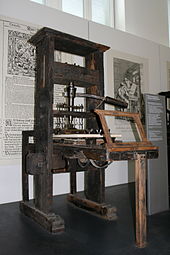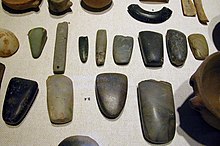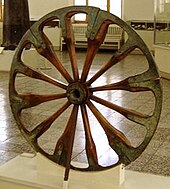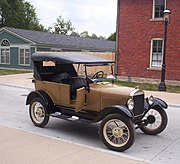Technology integration is the use of technology tools in general content areas in education in order to allow students to apply computer and technology skills to learning and problem-solving. Generally speaking, the curriculum drives the use of technology and not vice versa.
Technology integration is defined as the use of technology to enhance
and support the educational environment. Technology integration in the
classroom can also support classroom instruction by creating
opportunities for students to complete assignments on the computer
rather than with normal pencil and paper. In a larger sense, technology integration can also refer to the use of an integration platform and APIs
in the management of a school, to integrate disparate SaaS (Software As
A Service) applications, databases, and programs used by an educational
institution so that their data can be shared in real-time across all
systems on campus, thus supporting students' education by improving data
quality and access for faculty and staff.
"Curriculum integration with the use of technology involves the infusion of technology as a tool to enhance the learning in a content area or multidisciplinary setting... Effective integration of technology is achieved when students are able to select technology tools to help them obtain information in a timely manner, analyze and synthesize the information, and present it professionally to an authentic audience. The technology should become an integral part of how the classroom functions—as accessible as all other classroom tools. The focus in each lesson or unit is the curriculum outcome, not the technology."
Integrating technology with standard curriculum can not only give
students a sense of power, but also allows for more advanced learning
among broad topics. However, these technologies require infrastructure,
continual maintenance and repair – one determining element, among many,
in how these technologies can be used for curricula purposes and whether
or not they will be successful.
Examples of the infrastructure required to operate and support
technology integration in schools include at the basic level
electricity, Internet service providers, routers, modems, and personnel
to maintain the network, beyond the initial cost of the hardware and
software.
Standard education curriculum with an integration of technology
can provide tools for advanced learning among a broad range of topics.
Integration of information and communication technology
is often closely monitored and evaluated due to the current climate of
accountability, outcome-based education, and standardization in
assessment.
Technology integration can in some instances be problematic. A
high ratio of students to technological device has been shown to impede
or slow learning and task completion.
In some, instances dyadic peer interaction centered on integrated
technology has proven to develop a more cooperative sense of social
relations.
Success or failure of technology integration is largely dependent on
factors beyond the technology. The availability of appropriate software
for the technology being integrated is also problematic in terms of
software accessibility to students and educators.
Another issue identified with technology integration is the lack of
long-range planning for these tools within the educative districts they
are being used.
Technology contributes to global development and diversity in
classrooms while helping to develop upon the fundamental building blocks
needed for students to achieve more complex ideas. In order for
technology to make an impact within the educational system, teachers and
students must access to technology in a contextual matter that is
culturally relevant, responsive and meaningful to their educational
practice and that promotes quality teaching and active student learning.
History
The
term 'educational technology' was used during the post World War II era
in the United States for the integration of implements such as film
strips, slide projectors, language laboratories, audio tapes, and
television.
Presently, the computers, tablets, and mobile devices integrated into
classroom settings for educational purposes are most often referred to
as 'current' educational technologies. It is important to note that
educational technologies continually change, and once referred to slate
chalkboards used by students in early schoolhouses in the late
nineteenth and early twentieth centuries. The phrase 'educational
technology', a composite meaning of technology + education, is used to
refer to the most advanced technologies that are available for both
teaching and learning in a particular era.
In 1994 federal legislation for both the Educate America Act and
the Improving America's School's Act (IASA) authorized funds for state
and federal educational technology planning.
One of the principal goals listed in the Educate America Act is to
promote the research, consensus building, and systemic changes needed to
ensure equitable educational opportunities and high levels of
educational achievement for all students (Public Law 103-227).
In 1996 the Telecommunications Act provided a systematic change
necessary to ensure equitable educational opportunities of bringing new
technology into the education sector.
The Telecomm Act requires affordable access and service to advanced
telecom services for public schools and libraries. Many of the
computers, tablets, and mobile devices currently used in classrooms
operate through Internet connectivity; particularly those that are
application based such as tablets. Schools in high-cost areas and
disadvantaged schools were to receive higher discounts in telecom
services such as Internet, cable, satellite television, and the
management component.
A chart of "Technology Penetration in U.S. Public Schools" report
states 98% percent of schools reported having computers in the
1995–1996 school year, with 64% Internet access, and 38% working via
networked systems.
The ratio of students to computers in the United States in 1984 stood
at 15 students per 1 computer, it now stands at an average all-time low
of 10 students to computer.
From the 1980s on into the 2000s, the most substantial issue to examine
in educational technology was school access to technologies according
to the 1997 Policy Information Report for Computers and Classrooms: The
Status of Technology in U.S. Schools. These technologies included
computers, multimedia computers, the Internet, networks, cable TV, and
satellite technology amongst other technology-based resources.
More recently ubiquitous computing devices, such as computers and
tablets, are being used as networked collaborative technologies in the
classroom.
Computers, tablets and mobile devices may be used in educational
settings within groups, between people and for collaborative tasks. These devices provide teachers and students access to the World Wide Web in addition to a variety of software applications.
Technology education standards
National Educational Technology Standards (NETS) served as a roadmap since 1998 for improved teaching and learning by educators.
As stated above, these standards are used by teachers, students, and
administrators to measure competency and set higher goals to be
skillful.
The Partnership for 21st Century Skills is a national
organization that advocates for 21st century readiness for every
student. Their most recent Technology Plan was released in 2010,
"Transforming American Education: Learning Powered by Technology".
This plan outlines a vision "to leverage the learning sciences and
modern technology to create engaging, relevant, and personalized
learning experiences for all learners that mirror students' daily lives
and the reality of their futures. In contrast to traditional classroom
instruction, this requires that students be put at the center and
encouraged to take control of their own learning by providing
flexibility on several dimensions."
Although tools have changed dramatically since the beginnings of
educational technology, this vision of using technology for empowered,
self-directed learning has remained consistent.
Pedagogy
The
integration of electronic devices into classrooms has been cited as a
possible solution to bridge access for students, to close achievement
gaps, that are subject to the digital divide,
based on social class, economic inequality, or gender where and a
potential user does not have enough cultural capital required to have
access to information and communication technologies.
Several motivations or arguments have been cited for integrating
high-tech hardware and software into school, such as (1) making schools
more efficient and productive than they currently are, (2) if this goal
is achieved, teaching and learning will be transformed into an engaging
and active process connected to real life, and (3) is to prepare the
current generation of young people for the future workplace. The computer has access to graphics
and other functions students can use to express their creativity.
Technology integration does not always have to do with the computer. It
can be the use of the overhead projector,
student response clickers, etc. Enhancing how the student learns is
very important in technology integration. Technology will always help
students to learn and explore more.
Paradigms
Most research in technology integration has been criticized for being atheoretical and ad hoc
driven more by the affordances of the technology rather than the
demands of pedagogy and subject matter. Armstrong (2012) argued that
multimedia transmission turns to limit the learning into simple content,
because it is difficult to deliver complicated content through
multimedia.
One approach that attempts to address this concern is a framework
aimed at describing the nature of teacher knowledge for successful
technology integration. The technological pedagogical content knowledge or TPACK framework has recently received some positive attention.
Another model that has been used to analyze tech integration is the SAMR framework,
developed by Ruben Puentedura. This model attempts to measure the level
of tech integration with 4 the levels that go from Enhancement to
Transformation: Substitution, Augmentation, Modification, Redefinition.
Constructivism
Constructivism is a crucial component of technology integration. It is a learning theory that describes the process of students constructing their own knowledge through collaboration and inquiry-based learning.
According to this theory, students learn more deeply and retain
information longer when they have a say in what and how they will learn.
Inquiry-based learning, thus, is researching a question that is
personally relevant and purposeful because of its direct correlation to
the one investigating the knowledge.
As stated by Jean Piaget,
constructivist learning is based on four stages of cognitive
development. In these stages, children must take an active role in their
own learning and produce meaningful works in order to develop a clear
understanding. These works are a reflection of the knowledge that has
been achieved through active self-guided learning. Students are active
leaders in their learning and the learning is student-led rather than
teacher–directed.
Many teachers use a constructivist approach in their classrooms
assuming one or more of the following roles: facilitator, collaborator,
curriculum developer, team member, community builder, educational
leader, or information producer.
Counter argument to computers in the classroom
Is technology in the classroom needed, or does it hinder students'
social development? We've all seen a table of teenagers on their phones,
all texting, not really socializing or talking to each other. How do
they develop social and communication skills? Neil Postman (1993)
concludes:
The role of the school is to help students learn how to ignore and discard information so that they can achieve a sense of coherence in their lives; to help students cultivate a sense of social responsibility; to help students think critically, historically, and humanely; to help students understand the ways in which technology shapes their consciousness; to help students learn that their own needs sometimes are subordinate to the needs of the group. I could go on for another three pages in this vein without any reference to how machinery can give students access to information. Instead, let me summarize in two ways what I mean. First, I'll cite a remark made repeatedly by my friend Alan Kay, who is sometimes called "the father of the personal computer." Alan likes to remind us that any problems the schools cannot solve without machines, they cannot solve with them. Second, and with this I shall come to a close: If a nuclear holocaust should occur some place in the world, it will not happen because of insufficient information; if children are starving in Somalia, it's not because of insufficient information; if crime terrorizes our cities, marriages are breaking up, mental disorders are increasing, and children are being abused, none of this happens because of a lack of information. These things happen because we lack something else. It is the "something else" that is now the business of schools.
Tools
Interactive whiteboards
Interactive whiteboards
are used in many schools as replacements for standard whiteboards and
provide a way to allow students to interact with material on the
computer. In addition, some interactive whiteboards software allow
teachers to record their instruction.
- 3D virtual environments are also used with interactive whiteboards as a way for students to interact with 3D virtual learning objects employing kinetics and haptic touch the classroom. An example of the use of this technique is the open-source project Edusim.
- Research has been carried out to track the worldwide Interactive Whiteboard market by Decision Tree Consulting (DTC), a worldwide research company. According to the results, interactive Whiteboards continue to be the biggest technology revolution in classrooms, across the world there are over 1.2 million boards installed, over 5 million classrooms are forecast to have Interactive Whiteboards installed by 2011, Americas are the biggest region closely followed by EMEA, and Mexico's Enciclomedia project to equip 145,000 classrooms is worth $1.8 billion and is the largest education technology project in the world.
- Interactive whiteboards can accommodate different learning styles, such as visual, tactile, and audio.
Interactive Whiteboards are another way that technology is expanding
in schools. By assisting the teacher to helping students more
kinestically as well as finding different ways to process there
information throughout the entire classroom.
Student response systems
Student response systems
consist of handheld remote control units, or response pads, which are
operated by individual students. An infrared or radio frequency receiver
attached to the teacher's computer collects the data submitted by
students. The CPS (Classroom Performance System),
once set, allows the teacher to pose a question to students in several
formats. Students then use the response pad to send their answer to the
infrared sensor. Data collected from these systems is available to the
teacher in real time and can be presented to the students in a graph
form on an LCD projector. The teacher can also access a variety of
reports to collect and analyze student data. These systems have been
used in higher education science courses since the 1970s and have become
popular in K-12 classrooms beginning in the early 21st century.
Audience response systems
(ARS) can help teachers analyze, and act upon student feedback more
efficiently. For example, with polleverywhere.com, students text in
answers via mobile devices to warm-up or quiz questions. The class can
quickly view collective responses to the multiple-choice questions
electronically, allowing the teacher to differentiate instruction and
learn where students need help most.
Combining ARS with peer learning via collaborative discussions
has also been proven to be particularly effective. When students answer
an in-class conceptual question individually, then discuss it with their
neighbors, and then vote again on the same or a conceptually similar
question, the percentage of correct student responses usually increases,
even in groups where no student had given the correct answer
previously.
Among other tools that have been noted as being effective as a way of technology integration are podcasts, digital cameras, smart phones, tablets, digital media, and blogs.Other
examples of technology integration include translation memories and
smart computerized translation programs that are among the newest
integrations that are changing the field of linguistics.
Mobile learning
Mobile learning is defined as "learning across multiple contexts, through social and content interactions, using personal electronic devices".
A mobile device is essentially any device that is portable and has
internet access and includes tablets, smart phones, cell phones, e-book readers, and MP3 players.
As mobile devices become increasingly common personal devices of K-12
students, some educators seek to utilize downloadable applications and
interactive games to help facilitate learning. This practice can be
controversial because many parents and educators are concerned that
students would be off-task because teachers cannot monitor their
activity.
This is currently being troubleshooted by forms of mobile learning that
require a log-in, acting as a way to track engagement of students.
Benefits
According
to findings from four meta analyses, blending technology with
face-to-face teacher time generally produces better outcomes than
face-to-face or online learning alone. Research is currently limited on
the specific features of technology integration that improve learning.
Meanwhile, the marketplace of learning technologies continues to grow
and vary widely in content, quality, implementation, and context of use.
Research shows that adding technology to K-12 environments,
alone, does not necessarily improve learning. What matters most to
implementing mobile learning is how students and teachers use technology
to develop knowledge and skills and that requires training.
Successful technology integration for learning goes hand in hand with
changes in teacher training, curricula, and assessment practices.
An example of teacher professional development is profiled in
Edutopia's Schools That Work series on eMints, a program that offers
teachers 200 hours of coaching and training in technology integration
over a two-year span.
In these workshops teachers are trained in practices such as using
interactive whiteboards and the latest web tools to facilitate active
learning. In a 2010 publication of Learning Point Associates, statistics
showed that students of teachers who had participated in eMints had
significantly higher standardized test scores than those attained by
their peers.
It can keep students focused for longer periods of time. The use
of computers to look up information/ data is a tremendous time saver,
especially when used to access a comprehensive resource like the
Internet to conduct research. This time-saving aspect can keep students
focused on a project much longer than they would with books and paper
resources, and it helps them develop better learning through exploration
and research.
Project-based activities
Definition:
Project Based Learning is a teaching method in which students gain
knowledge and skills by working for an extended period of time to
investigate and respond to an authentic, engaging and complex question,
problem, or challenge.
Project Based Activities is a method of teaching where the
students gain knowledge and skills by involving themselves for the more
period of time to research and respond to the engaging and complex
questions, problems, or challenges. the students will work in groups to
solve the problems which are challenging. The students will work in
groups to solve the problems which are challenging, real, curriculum
based and frequently relating to more than one branch of knowledge.
Therefore, a well designed project based learning activity is one which
addresses different student learning styles and which does not assume
that all students can demonstrate their knowledge in a single standard
way.
Elements
The project based learning activities involves four basic elements.
- An extended time frame.
- Collaboration.
- Inquiry, investigation and research.
- The construction of an artifact or performance of a consequential task.
Examples of activities
CyberHunt
The term "hunt" refers to finding or searching for something. "CyberHunt"
means an online activity which learners use the internet as tool to
find answers to the question's based upon the topics which are assigned
by someone else. Hence learners also can design the CyberHunt on some
specific topics. a CyberHunt, or internet scavenger hunt, is a project-based activity which helps students gain experience in exploring and browsing the internet.
A CyberHunt may ask students to interact with the site (e.g.: play a
game or watch a video), record short answers to teacher questions, as
well as read and write about a topic in depth. There are basically two
types of CyberHunt:
- A simple task, in which the teacher develops a series of questions and gives the students a hypertext link to the URL that will give them the answer.
- A more complex task, intended for increasing and improving student internet search skills. Teachers ask questions for students to answer using a search engine.
WebQuests
It
is an inquiry oriented activity in which most or all of the information
used by the learners which are drawn out by the internet/web. It is
designed to use learner 'time well', to focus on using information
rather than on looking for it and to support the learners to think at
the level of analysis, synthesis, and evaluation. It is the wonderful
way of capturing student's imagination and allowing them to explore in a
guided, meaningful manner. It allow the students to explore issues and
find their own answers.
There are six building blocks of webQuests:
- The introduction – capturing the student's interest.
- The task-describing the activities end product.
- The resources-web sites, students will use to complete the task.
- The evaluation-measuring the result of the activity.
- The conclusion-summing up of the activity.
WebQuests
are student-centered, web-based curricular units that are interactive
and use Internet resources. The purpose of a webQuest is to use information on the web
to support the instruction taught in the classroom. A webQuest consists
of an introduction, a task (or final project that students complete at
the end of the webQuest), processes (or instructional activities),
web-based resources, evaluation of learning, reflection about learning,
and a conclusion.
WISE
The Web-based Inquiry Science Environment
(WISE) provides a platform for creating inquiry science projects for
middle school and high school students using evidence and resources from
the Web. Funded by the U.S. National Science Foundation, WISE has been developed at the University of California, Berkeley
from 1996 until the present. WISE inquiry projects include diverse
elements such as online discussions, data collection, drawing, argument
creation, resource sharing, concept mapping and other built-in tools, as
well as links to relevant web resources. It is the research-focused,
open-source inquiry-based learning management system that includes the
student- learning environment project authoring environment, grading
tool, and tool and user/ course/ content management tools.
Virtual field trip
A virtual field trip is a website that allows the students to experience places, ideas, or objects beyond the constraints of the classroom.
A virtual field trip is a great way to allow the students to explore and
experience new information. This format is especially helpful and
beneficial in allowing schools to keep the cost down. Virtual field
trips may also be more practical for children in the younger grades, due
to the fact that there is not a demand for chaperones and supervision.
Although, a virtual field trip does not allow the children to have the
hands on experiences and the social interactions that can and do take
place on an actual field trip. An educator should incorporate the use of
hands on material to further their understanding of the material that
is presented and experienced in a virtual field trip.It is a guided
exploration through the www that organizes a collection of pre-
screened, its thematically based web pages into a structure online
learning experience
ePortfolio
An ePortfolio
is a collection of student work that exhibits the student's
achievements in one or more areas over time. Components in a typical
student ePortfolio might contain creative writings, paintings,
photography, math explorations, music, and videos. And it is a
collection of work developed across varied contexts over time. The
portfolio can advance learning by providing students and/or faculty with
a way to organize, archive and display pieces of work.














